Where is hot in January? Best holiday destinations for winter sun
Where to go to beat the post-Christmas blues

Your support helps us to tell the story
This election is still a dead heat, according to most polls. In a fight with such wafer-thin margins, we need reporters on the ground talking to the people Trump and Harris are courting. Your support allows us to keep sending journalists to the story.
The Independent is trusted by 27 million Americans from across the entire political spectrum every month. Unlike many other quality news outlets, we choose not to lock you out of our reporting and analysis with paywalls. But quality journalism must still be paid for.
Help us keep bring these critical stories to light. Your support makes all the difference.
Post-Christmas, there’s always something far less jolly waiting on the other side of the unwrapped presents – the depths of British winter.
But while the January blues are on the horizon for some, those in the know are aware that the beginning of a new year can be the best time to jet off in search of winter sun.
The southern side of the world is at the height of summer in January, with destinations like Melbourne and Zanzibar offering warm city breaks or sun-drenched beach holidays.
Cities such as Buenos Aires and Ho Chi Minh provide some South American summer flair and southeast Asian character respectively, while island favourites like Barbados and Tenerife remain the go-to for a sunny fly-and-flop holiday with just the right amount of things to see and do.
Half of the world is basking in the high 20s as we hide away in sub-zeros, so we’ve narrowed down some of the best destinations for a warm January trip.
Read more: The best winter sun holiday destinations without the jet lag
Buenos Aires, Argentina
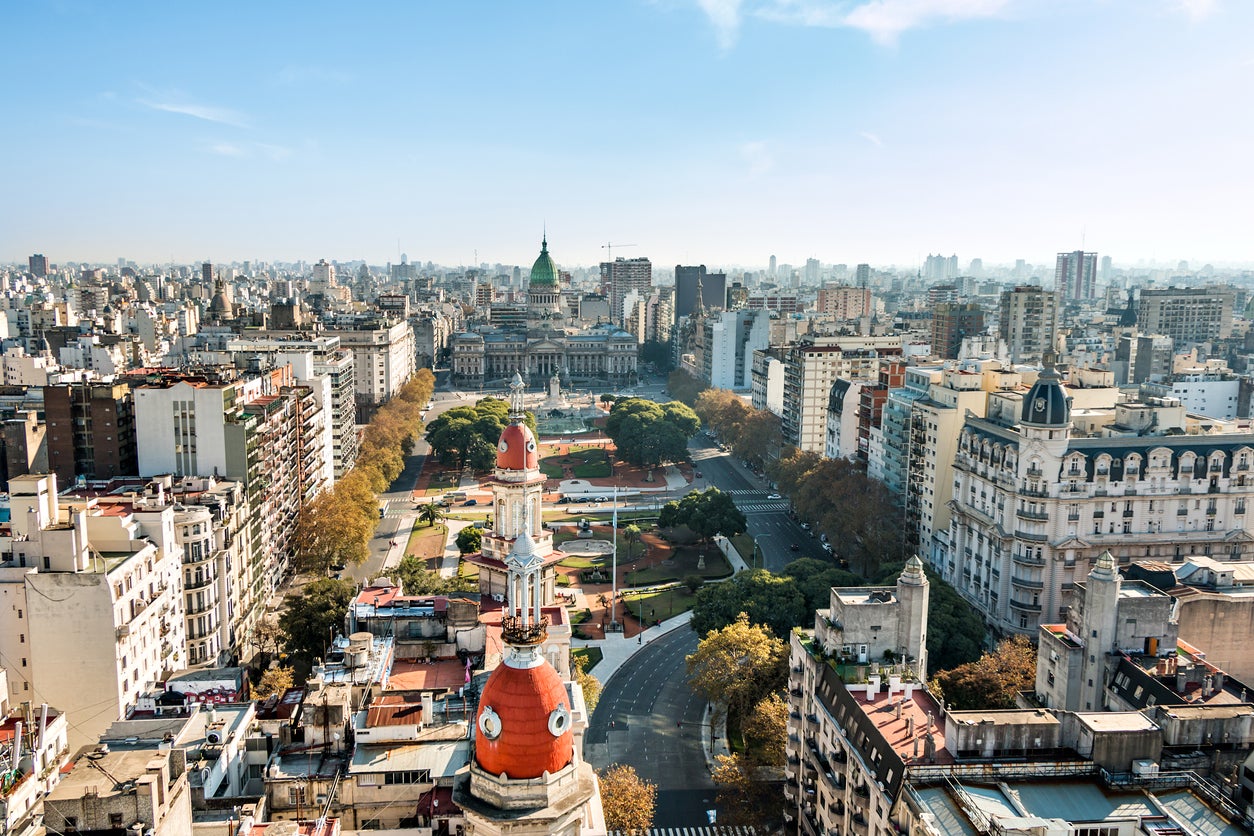
- Average temperature in January: 25C
- Hours of sunshine per day: 9
Known as the ‘Paris of South America’, Buenos Aires is an eclectic capital city that still houses remnants of its country’s often complicated, sometimes sobering history. Architecturally, it is far more similar to a European city than a South American one, a characteristic seen in buildings like the Art Deco Metropolitan Theatre or the Beaux-Arts Kirchner Cultural Centre.
Culturally, however, Buenos Aires is the centre of the vibrant, energetic Argentinian way of life. By day, the streets of districts like Palermo, Almagro and San Telmo hum with the chaotic activity of eager tourists, local football fans and alfresco cafe terraces, while at night the equally frenzied nightlife is on show through the Latin music blasted out of bar speakers and the proliferation of intense tango shows.
Barbados

- Average temperature in January: 26C
- Hours of sunshine per day: 9
This beautiful Caribbean island has long-term links with the UK, making it a perennially popular destination with Brits from winter through to the height of summer. Expect highs of around 29C, and many tourists are simply there to make the most of the bone-white sands and turquoise waters that front their grandiose resorts.
The western shores of the Platinum Coast are where the most luxurious resorts are based, while parts of the eastern coast around the town of Bathsheba are the most famed surf areas on the island. Towards the south, Carlisle Bay contains several shipwrecks that have become renowned scuba diving spots.
A handful of inland areas are worth exploring too if you want to make the most of your visit here. Discover a slice of history at the Mount Gay rum distillery, or head to the capital, Bridgetown, a thriving city of rum shacks and shopping streets. High-end Holetown is where you’ll find the best international cuisine and luxury brands, while Oistins, a smaller fishing town in the south, hosts a weekly ‘Fish Fry’ event featuring hours of music and partying alongside local vendors and food stalls.
Read more: Barbados travel guide – where to go and what to see on the Caribbean island
Tenerife, Spain
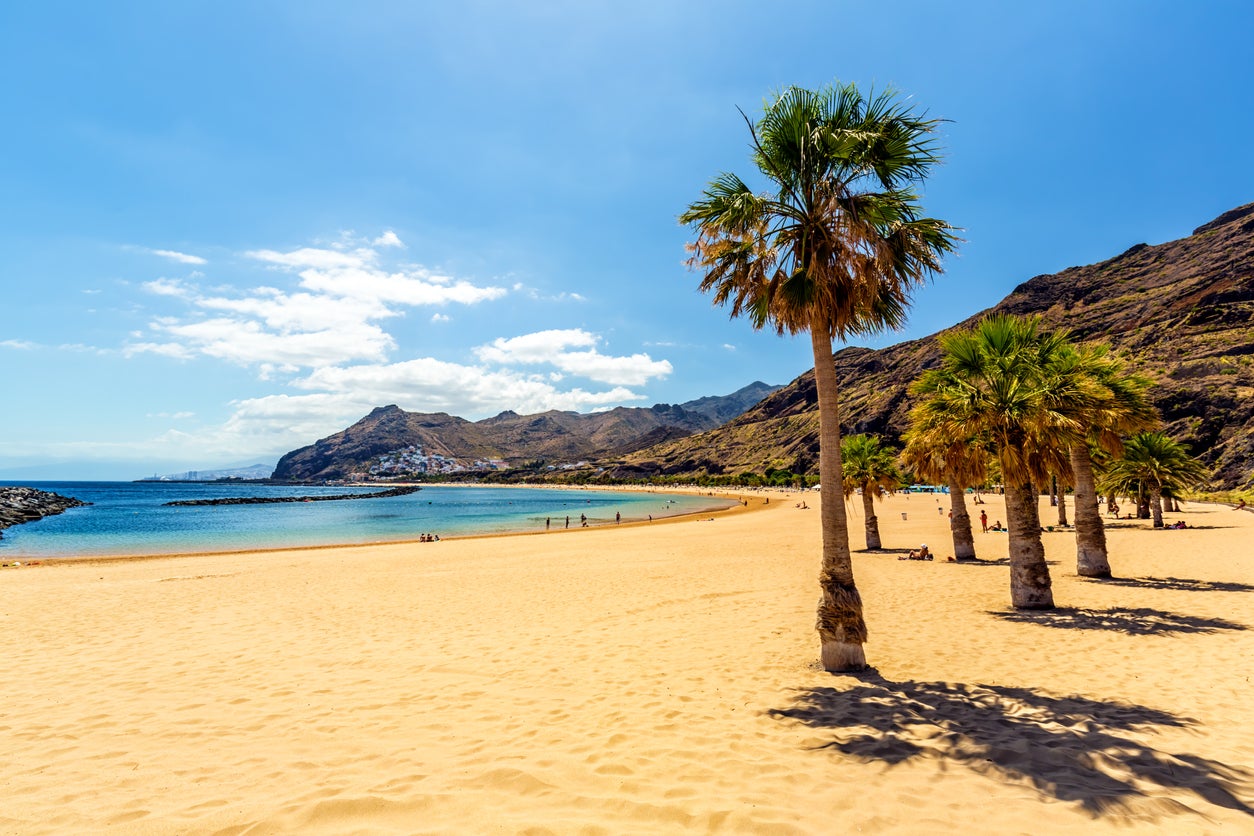
- Average temperature in January: 19C
- Hours of sunshine per day: 6
The warmest destination in Europe provides just the right amount of winter sun, with weather that will allow entire days on the beach while rarely getting too warm – average highs will be around 20C. Head to the southern coastal areas like Los Cristianos and Playa de las Americas for a fly-and-flop holiday, where dozens of resorts cater to different types of holidaymakers while offering activities like watersports, snorkelling and scuba diving.
Alternatively, choose somewhere closer to Santa Cruz, the island capital, to explore the best of the island’s nature. The northern coast contains several striking black beaches, as well as the impressive artificial beach at Teresitas, while Mount Teide National Park is a land of rugged red terrain and scenic hiking trails that also contain the highest peak in the country.
Read more: The best beaches in Tenerife
Zanzibar, Tanzania
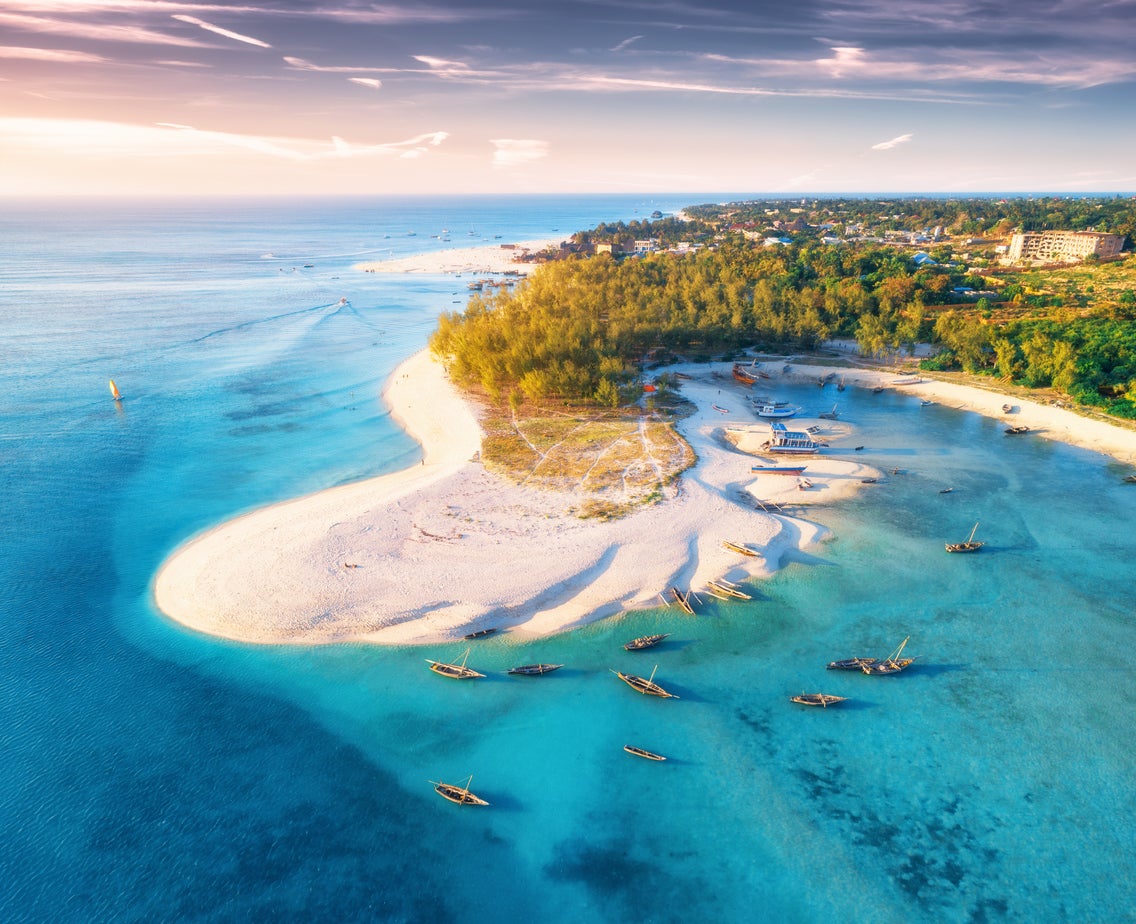
- Average temperature in January: 28C
- Hours of sunshine per day: 8
That an island just 53 miles long can compete with Mount Kilimanjaro to be the jewel of Tanzania’s natural landscape is a testament to Zanzibar’s natural beauty. This archipelago lies just two hours from Dar es Salaam by ferry and offers visitors from the mainland a host of pristine, paradise-like beaches, the waters of which are home to groups of dolphins and shoals of fish that live among the colourful coral reefs.
As well as exotic relaxation and world-class snorkelling, this Indian Ocean destination offers characterful towns, spice plantations and the dense, swamp-like Jozani-Chwaka National Park, where plenty of exotic animals such as red colobus monkeys live. The main islands are Pemba and Unguja, home to the island capital and its Unesco-listed Stone Town.
Dubai, UAE
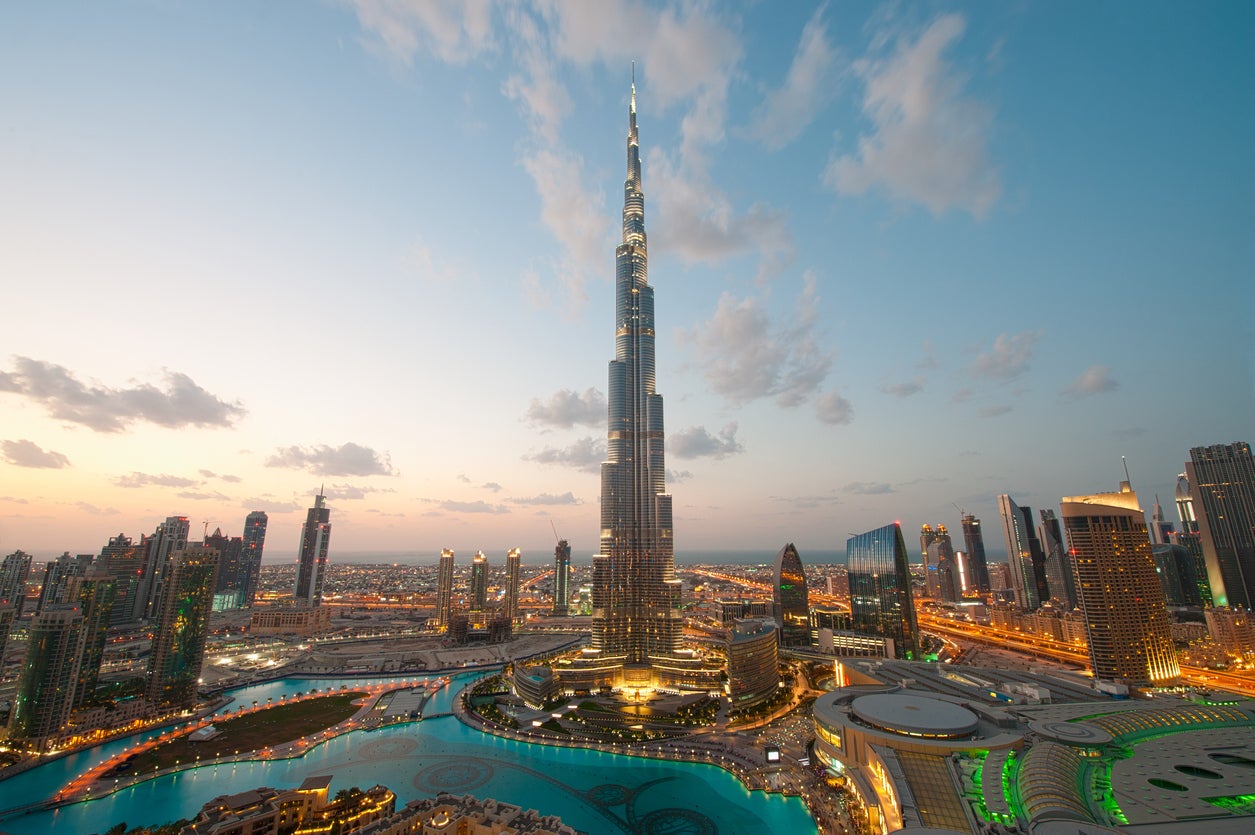
- Average temperature in January: 20C
- Hours of sunshine per day: 8
The UAE’s most well-known city has become a glitzy desert metropolis since the discovery of its oil reserves in 1966. It now contains a variety of modern sights – from the world’s tallest building, the Burj Khalifa, to the enormous Dubai Mall or impressive built-up areas like the Marina – and extensive heritage districts such as Dubai Creek and the historic Al Fahidi neighbourhood, alongside a series of beautiful souks.
Highs in January will peak at around 24C, meaning that beach areas like Jumeirah, JBR or Kite Beach can all be enjoyed during the day without experiencing the summer’s sweltering temperatures. The surrounding desert is worth exploring too, with activities like dune buggying and camping in traditional Bedouin campsites popular among tourists.
Ho Chi Minh City, Vietnam
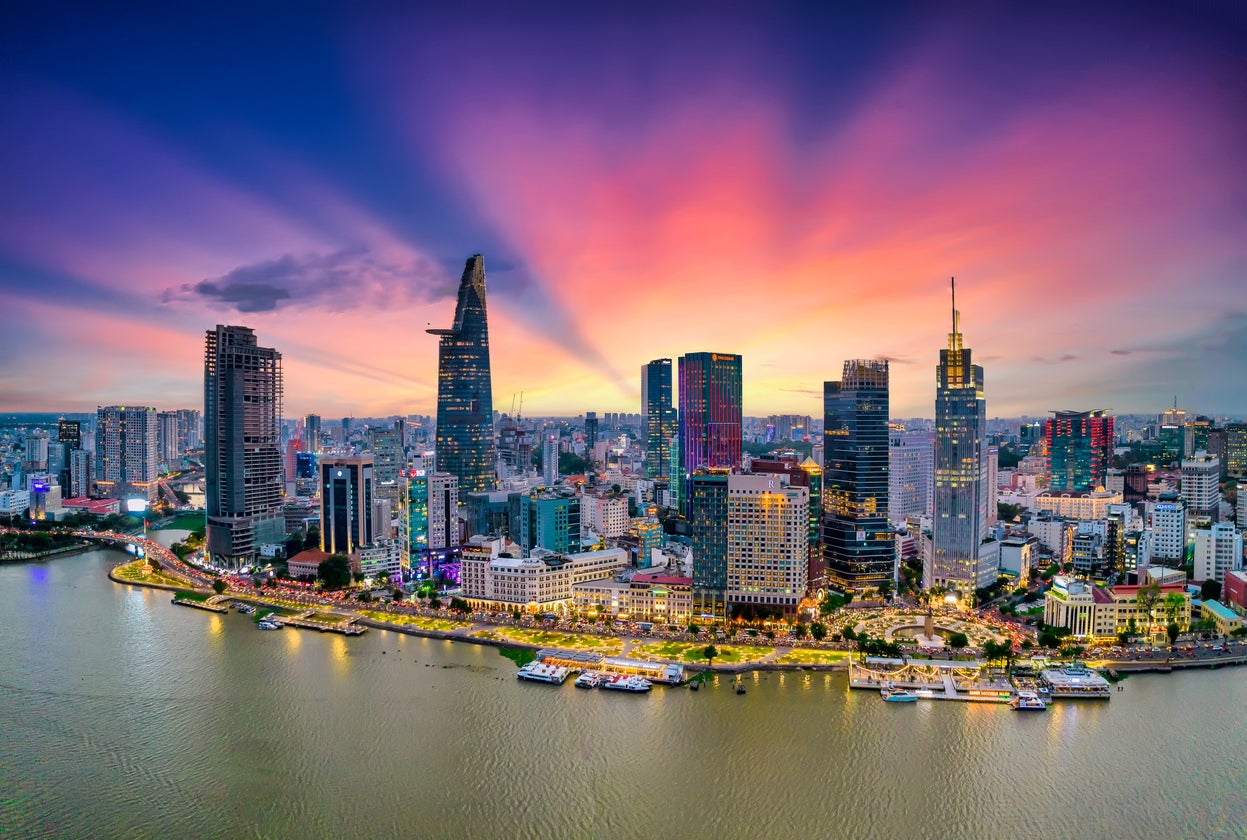
- Average temperature in January: 27C
- Hours of sunshine per day: 8
Vietnam’s second city sits in the southern end of the country, around 1,000 miles directly south of the capital, Hanoi. Being the economic heart of the country, it has become a sprawling metropolis that is known for its lively and often hectic way of life, enticing visitors with the promise of seeing a city that combines the best bits of Vietnam’s past and present.
Whether you tour yourself on a scooter or are sampling Vietnamese delights at a street food market, the buzz of activity – and likely traffic – is palpable throughout the city. The Chinese Quarter and District 1 – where many of the main sights, such as the Opera House and Notre Dame cathedral, are located – are testament to the influence of their Asian neighbours and the colonial French period, with Dong Khoi Street the city’s main thoroughfare and Bui Vien a popular area for tourists and backpackers. Attractions include the Ho Chi Minh Museum, the Cao Dai Great Temple and Cold War-era Cu Chi tunnels; it is best to explore over a couple of days seeing as highs can reach 32C.
Read more: Best Vietnam holiday destinations – when to travel and where to stay
Melbourne, Australia
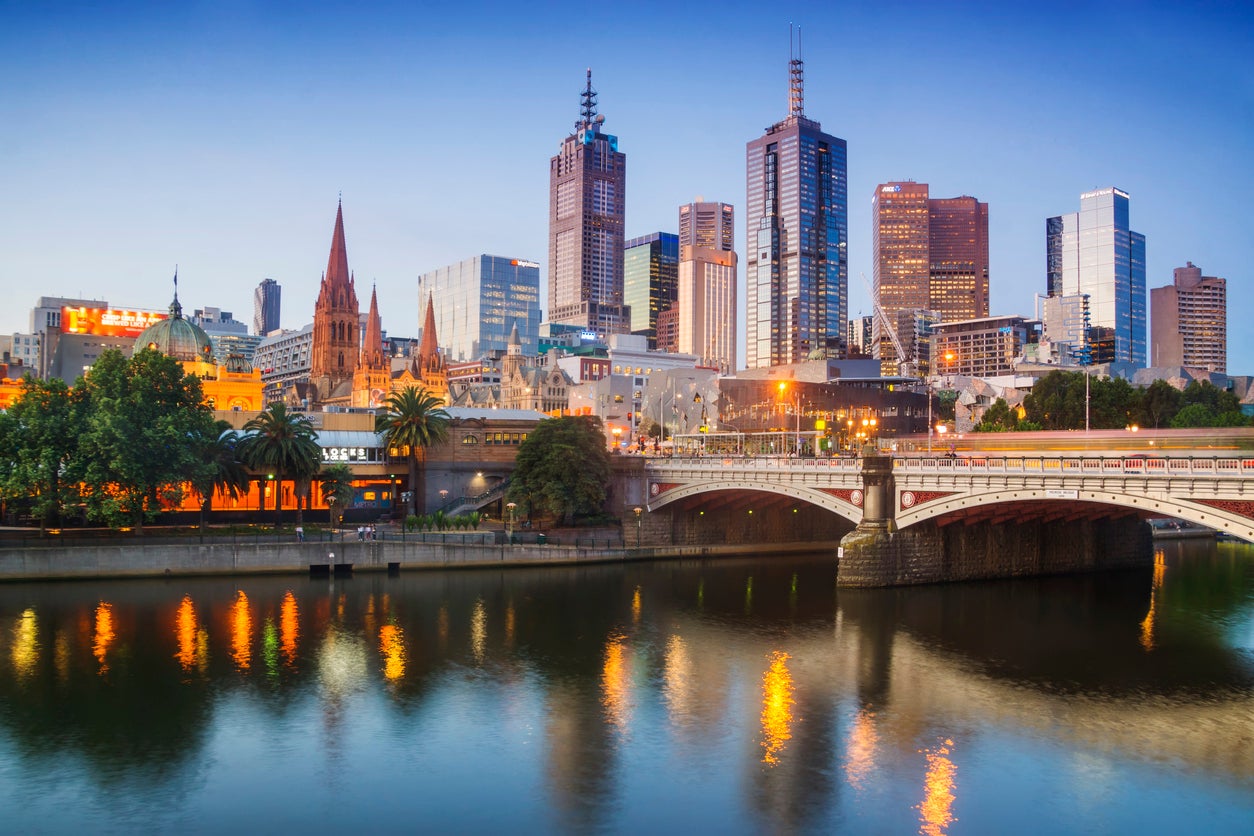
- Average temperature in January: 21C
- Hours of sunshine per day: 10
Australia’s second-largest city may be difficult to get to for Brits, but a combination of excellent January weather – you can expect highs of around 27C – and the fusion of different characteristics makes this southern city a must-visit. From sports venues and restaurants to nightlife and art galleries, Melbourne is home to some of Australia’s highlights, including the city’s Cricket Ground, the National Gallery and the region-dedicated Melbourne Museum. The Australian Open is also held here every January.
Consistently ranked as one of the world’s most liveable cities, Melbourne is underpinned by a somewhat European atmosphere, visible throughout areas like its Central Business District and the beachfront of St Kilda, with the Royal Botanic Gardens also offering a dose of UK-related history. It’s brimming with other subtle highlights, from the array of hidden bars and food spots to amazing outdoor and indoor art and a series of impressive architectural highlights, such as the towering skyscrapers that define its skyline and historic buildings like Flinders Street station.
Read more: Melbourne city guide
Join our commenting forum
Join thought-provoking conversations, follow other Independent readers and see their replies
Comments